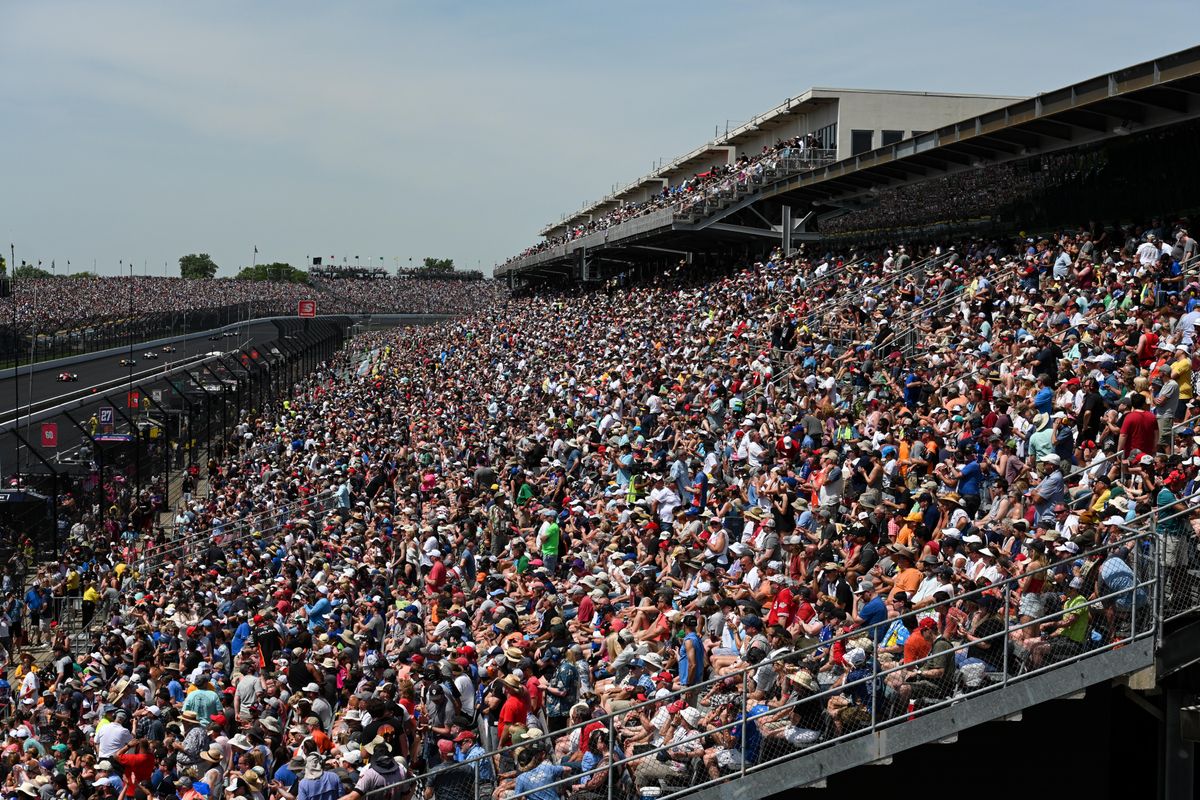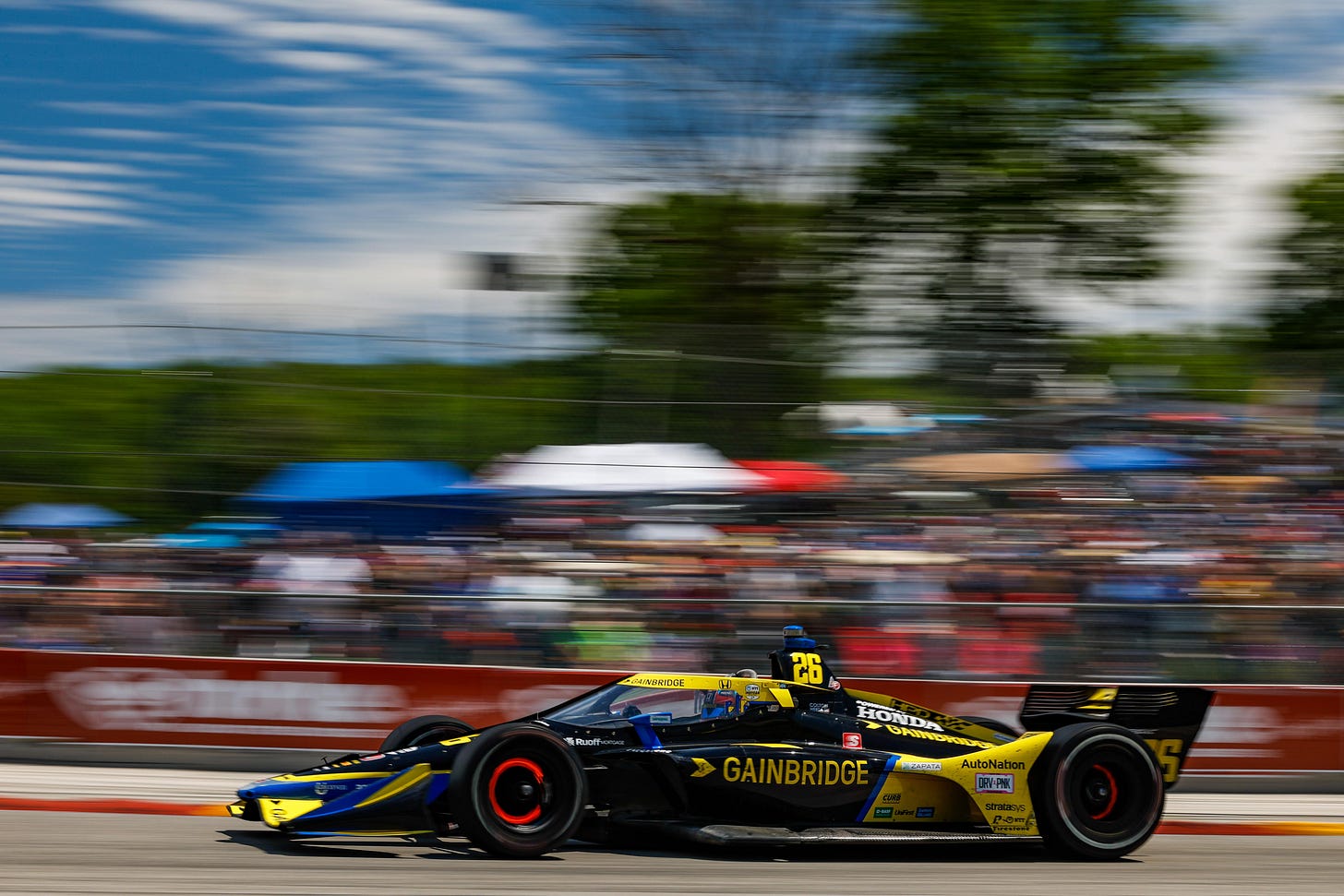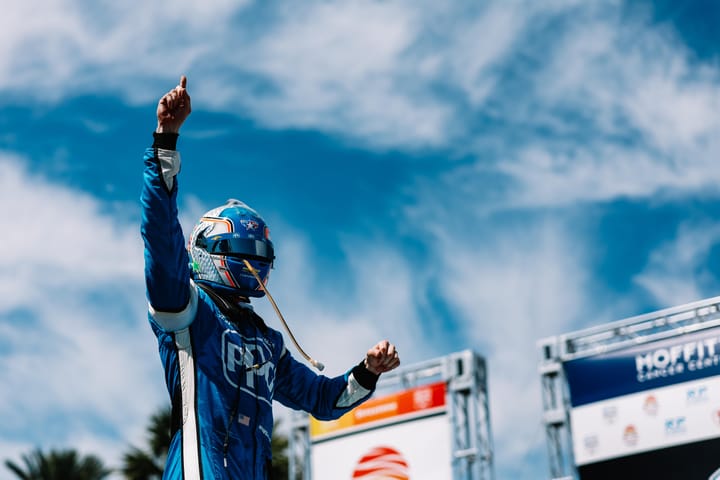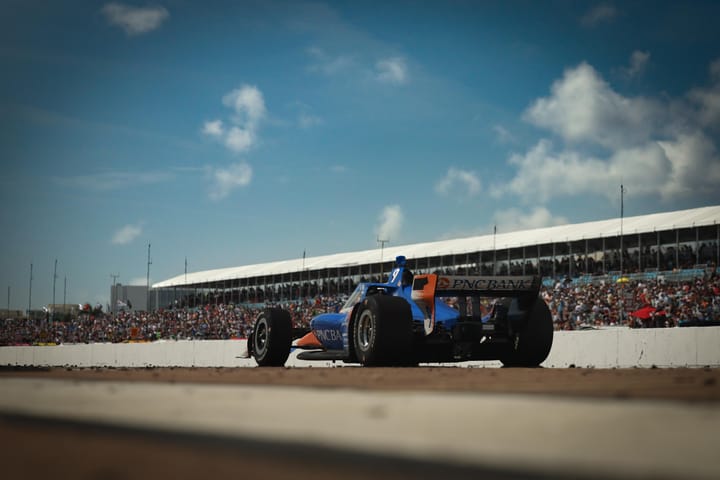IndyCar fans are global, passionate and growing in number. So stop worrying about TV ratings.

Allow me to go off script immediately, if just for a moment:
American open wheel racing has undergone countless rebirths since its peak late last century.
The “split” in the late 90s, where powerful team owners split from the Indy Racing League and Indianapolis Motor Speedway leadership, could have been a death knell for all American open wheel racing, in hindsight (any commentary on it will be hindsight for me, since I was born in 2000).
But it wasn’t.
Indy didn’t die, and neither did open wheel racing. In 2008, the split ended when Champ Car merged back into the Indy Racing League, known forever since as the IndyCar Series, with IZOD, Verizon and NTT Data sponsorship sprinkled in for taste.
There seems to be a sense among some fans, at least fans with Twitter accounts, that the series is constantly on the verge of collapse — partly because of the dramatic changes that came with the split.
If the series isn’t always improving — or trying to resemble the exact series that ran in, say, 1994 — there’s an unhealthy amount of discourse on social media, with fans overreacting to what are truly outlier statistics in a trend of growth on all fronts for the IndyCar Series.
Many older fans and commenters on social media seem to worry a lot about American TV ratings from NBC as a vital sign for the series. Some look at attendance figures. Others looks at solely the Indy 500 TV ratings, or any other combination of not only TV-centric viewership, but American-centric TV viewership.
It’s also important to remember the following: you are not a TV executive (if you are, hello!), you aren’t buying advertising space on television, and you aren’t worried about various marketing metrics you need to expand your brand. You, the fan, don’t need to worry as much about TV ratings as much as it seems.
In reality, the IndyCar fanbase is much larger than any single metric or measurement can define, and always will be. TV ratings cannot be the sole indicator of IndyCar’s health, and neither can outlier figures or any other anomaly. American-centric audience measurements cannot accurately portray the interest and fandom of the IndyCar Series. They make for interesting Twitter discourse, yes, but TV ratings have less to do with fandom than racing fans of all kinds seem to feel.
One good indicator of series health and interest is the 2022 Global IndyCar Fan Survey. Produced by Nielsen (yes, the TV ratings Nielsen) and distributed by IndyCar and the Motorsport Network, the survey ended up with 53,000 respondents from 147 countries. The well-produced survey used scientifically proven survey methods to ask respondents about demographics, series image, viewing habits and more.
The survey ended just before this season began, but it’s worth revisiting at IndyCar’s 2022 halfway point.
The survey conclusively found the following:
- IndyCar is growing quite a bit among younger demographics in recent years.
- IndyCar is growing Internationally at a high rate.
- Fans overwhelmingly enjoy the competitive nature of the racing.
- Fans love going to races.
All of the points above are unwavering facts. Despite a dip in ratings for one week, a rainy weekend that lowers at-track attendance or whatever happens to an IndyCar race weekend, it won’t change the facts of growing, younger and global IndyCar fandom.
The survey can also help us get closer to answering the question: how many people are IndyCar fans? Of the more than 53,000 responses, just 56% live in the United States, or around 30,000 respondents.
If the crown jewel of the sport pulls in about 5 million viewers in the U.S. (which is good, it must be noted), and we realize that there are people that, for whatever reason, aren’t watching television or streaming platforms the day of the Indianapolis 500 but still care about the sport and the outcome, we can come to two conclusions.
1: There’s a significant number of IndyCar fans that aren’t counted in that number, and, likewise, many more that aren’t counted in week-to-week TV ratings for the same reasons (life, family, work, other obligations), but still interact with IndyCar content via social media, news reports or other media (and still count as impressions for sponsors).
2: The American TV metrics only account for a fraction of the pie when it comes to TV. This year’s Indianapolis 500 had the highest viewership on record in the UK on Sky Sports, peaking at 372,000 viewers, and that number is going to keep growing. American fandom accounts for even less of the pie when it comes to fandom.
Some other key figures the survey found include:
- 37% of respondents were under 35, a key demographic for growing long-term fans and the most appealing demographic to most advertisers and sponsors.
- 12.2% of respondents were women, including 14% of the North American audience. A low number, but the second-highest number in the Motorsport Network’s survey history, with that number likely increasing in coming years.
- 85% of 16-24-year-old respondents and 70% of 25-34-year-old respondents play video games (hello 2023 IndyCar Game and recent iRacing AI IndyCar functionality).
- 80% of fans also follow Formula One.
- Over 50% of fans in Europe, the Middle East and Africa have followed the series for less than 5 years, compared to 18% of North American fans.
- The five words fans would use to describe IndyCar? Competitive, exciting, entertaining, growing and dangerous — in that order. The three least common words: boring, global (despite what the survey results say) and glamourous.

There’s a lot of interesting, enriching and scientifically verifiable data from this survey. It has a long shelf life as well, and I may revisit it in future columns.
The point of all of this is to say a low TV rating for the Detroit Grand Prix does not mean you have to burn everything down and restart the IndyCar Series from scratch.
Think of the sponsors that don’t even have an American presence. Huski Chocolate, primary sponsor for Indy 500 winner and IndyCar points leader Marcus Ericsson, only sells its products in Sweden and Norway at the moment. That hasn’t stopped Huski Chocolate from putting Ericsson and the No. 8 Honda on signs across Sweden. My last column took off after Marcus Ericsson himself retweeted it (hello new Swedish readers!), and none of the IndyCar fans in his home country can watch the races on NBC. Takuma Sato, who won the 2017 and 2020 Indianapolis 500s, was a rockstar in Japan and promoted endlessly by Honda in Tokyo and elsewhere, but he didn’t get the same fanfare in most of the U.S.
And that’s ok.
American fans want to support American teams, discuss American TV data, buy from American companies and such — and there’s nothing wrong with that. But IndyCar has grown beyond America. Additionally, global sports have national-based interests. If a Chinese driver won the Indianapolis 500, you simply cannot expect Chicago, Johannesburg, London or Rio to have the same fanfare and interest for that driver as Beijing might.
In short: IndyCar is doing great. It is a competitive, global motorsport working toward a more inclusive environment, and it’s paying dividends. It isn’t forgetting American fans, it can more than withstand a one weekend dip in ratings on the USA Network, and it’s better off including global voices.
I’d rather have that over whatever worked in 1994.
P.S.: The survey found IndyCar fans are FUNDAMENTALLY opposed to any changes to race format, like adding NASCAR’s stage racing or playoffs format (like, . The strongest opposition came from the 16-34 demographic in North America. I am not worried for IndyCar long term, but I believe with every fiber of my being that NASCAR needs to eliminate the playoffs and stage racing to be taken seriously.





Comments ()